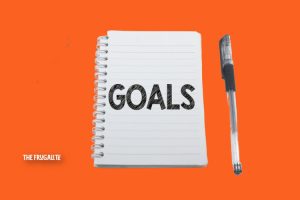(Psst: The FTC wants me to remind you that this website contains affiliate links. That means if you make a purchase from a link you click on, I might receive a small commission. This does not increase the price you’ll pay for that item nor does it decrease the awesomeness of the item. ~ Daisy)
Ah, debt and loans. The great topics of the century. Literally. It’s not just a random, one-off figure. Consumer debt has only been a major issue over the last century, give or take. Sure, there was debt before this. Heck, the US treasury was developed by Alexander Hamilton in the 1700s on a debt system. (You’ve seen Hamilton the musical, right?) After the first bank was developed in the mid-1700’s mortgages were a thing, but they weren’t common.
The history of consumer debt and loans
Consumer debt didn’t start to become so widespread until about 1919 at the offering of the first car loan, and within ten years, two-thirds of cars were purchased on credit. While the first US mortgage was in 1766, they really weren’t common at that time. In fact, US mortgages didn’t really start to become a common issue until 1949. It wasn’t until 1949 that the mortgage debt-to-income ratio started to rise from a mere 20% up to 73% by 2000.
What’s our debt like now?
As of 2021, the USA alone holds $14,600,000,000,000 in consumer debt. For an easy-to-read version, that’s 14.6 trillion dollars. Unfortunately, that giant amount of debt is divided by 340 million Americans, with the average person holding a little over $90,000 in debt. It’s also only gone up since the start of Covid.
Most of that debt is based on over:
- $10.3 trillion is on mortgages
- $1.57 is on student loans
- $1.3 trillion is on car loans and leases
- $836.2 billion is on credit cards and retail credit cards (this number has actually gone down almost $100 billion dollars since 2019)
- $323.5 billion is on personal loans
What else do I need to know about debt and loans?
Well, now that you know a bit about the current debt crisis and the history of debt, it’s time to dive into the main categories of debt types. And no, I don’t mean mortgages, student loans, credit cards, etc.
What I’m referring to is the logistics of your debt. How is interest determined? Can your loan grow? Is it a set rate and payment every month? Do you know if your debt is revolving, secured, or unsecured? Do you even know what that means?
If not, no worries because that’s what I’m here for! These are all questions I didn’t even know needed to be asked until about two years ago. For me, it used to just be, what’s the interest rate, and can I make extra payments. Now I know better.
So without further ado, here are the nitty-gritty things you really should know about your debt.
What you need to know about secured debt
A secured loan is defined as a loan that is backed up with some form of collateral. Using collateral as a means of loan guarantee can be done for various reasons, such as if it is a very large sum you’re borrowing, or if you don’t have the best credit score (or little credit history). Collateral is really just a way for the lending party to protect itself.
Sometimes, having a secured loan means you can actually have a lower interest rate. A very good example of this is a car loan. The collateral, in this case, is the car itself. You pay the car loan, and you get a low-interest rate, and, if for some reason, you are no longer able to make payments, the lending agent will repossess your car.
Some examples include;
- Auto loans
- Mortgages
- Credit cards where you need to put down a deposit
- Life insurance policies
- Insurance on expensive items such as antiques or jewelry
Unsecured debt
An unsecured loan, if you haven’t already guessed, is a type of loan where there is no deposit or collateral. There is nothing securing this loan that you will forfeit if you default on the loan. There are still consequences, though. In this case, these consequences usually come by way of large fees and lower credit scores (which can prevent you from collecting more debt in the future). This type of debt often has a much higher interest rate as well. Think credit cards where the interest often starts at 20%.
Some examples include:
- Credit cards
- Pay day loans
- Personal loans
- Student loans
Revolving debt
Have you heard of this term before? If not, you’re not alone. However, I’m sure you know examples of revolving debt, the most well-known being credit cards. Essentially, revolving debt is where you have a set amount of funds you can borrow, for example, a credit card with a $1000 limit. If you’re carrying a $200 balance on the card, that means you can only spend $800. If you pay off that $200 balance, though, you have full access to the $1000. You can go through the cycle of using and paying it off over and over again.
Examples of revolving debt include:
- Credit cards
- Lines of credit
- Some bank loans
On the other hand, you have debt that is not revolving. You get your set amount, you get instant access, but if you pay it off, you don’t get to use it again. Once it’s paid off, it’s gone.
Examples of non-revolving debt include:
- Mortgages
- Car loans
- Some bank loans
- Student loans
What did you learn about debt and loans?
Was there something you learned about different types of loans and debts? Something you wish you’d known sooner or want to know more about? Share in the comments!
About Chloe Morgan
Chloe Morgan grew up living with a tight budget. In her late teens and early 20’s all the lessons she’d learned started to slip, like it does for many college age students on their own for the first time, and with their first credit card. As she’s gotten older, she’s started to deal with the repercussions and has taken on a frugal way of living, keeping her costs low, as she pays off debt and saves for her future. Chloe lives in Northern Ontario, Canada, with her cute dog, Rhea.












4 thoughts on “How Much Do You Know About Your Debt and Loans?”
One should always think long and hard before refinancing one’s house or taking out an equity loan (interest likely not deductible) to pay off unsecured debt (aka credit card). While the credit card company *could* garnish your paycheck and/or put a lien on your home for unpaid debt, they cannot take your home. And all too many who do refi to pay off CC debt are soon back in credit card debt.
One should also know bankruptcy code in his/her state. In some states (such as FL), it is much easier to keep your house when filing where as in other states (such as OK maybe?), you’ll might be lucky enough to keep the clothes on your back.
Know what monies can be garnished – SS, SS disability are protected but that doesn’t mean Clueless/careless clerk doesn’t mess up and allow it. Then you’ll have to go to court and prove the source of your money (such as SS, SS disability).
There is smart debt and not so smart debt. Student loans can be smart debt but can also be not so smart debt (private college versus public for the same degree/earning potential).
An emergency fund is key to helping avoid debt but easier said than done for some. Having credit is important – you don’t have to have an astronomical credit limit. By law, US CC companies have to print (in a font large enough for most to read) how much interest you pay over a what period time when just making minimum payment (providing you do not charge another penny). A bit of an eye opener.
Sad to say for assets, one may own them – aka don’t owe the bank/finance company. But there are still taxes, insurance, and maintenance. That whim ATV (want) is more than just payments.
If banks close, and my loan is not paid off (needed a new roof) can the house be taken? Secured loan, house as collateral. Live in Ohio with banking at local Farmer’s Citizans bank. Thanks
Did your bank branch close or the bank? If the bank proper closed, the OCC will find another bank to take over the accounts. The terms of your loan should not change be it fixed or variable (contract) though interest rates on CDs etc. *could* change. You should have received notification where to send your new payment and/or new bank account information. Call the OH attorney general’s office – they should be able to guide you. A quick search doesn’t show the bank being in receivership.
Different kinds of debt can have wildly different kinds of rules and minefields to navigate in the US. (I won’t claim knowledge of other countries’ laws.) On the commercial side, in a previous economic crash, I tried to help a local property developer (with a long honorable history of sound completed projects and perfect payments history) to find a replacement loan after the federally regulated bank he had been using filed four different fraudulent lawsuits against him. The bank was being leaned on by the regulators to strongly increase their reserves, and demanding a balloon style payoff from my friend (with a perfect payment record) was the only way that bank saw to please the feds. It cost my friend $100,000 in legal defense fees to defeat that bank in each of those four cases. He swore to never ever again to use loans from any federally regulated lender.
There are also minefields on the consumer side. One of the largest is in medical costs — whether actual or merely alleged. This is a significant cost of personal financial destruction — often involving credit wrecking, fraudulent/duplicate/unnecessary billing, victimization because of unawareness of complex billing codes, unawareness of billing negotiation services, and lack of knowledge at both state and federal level laws to navigate through such disputes.
In the US, hospitals are notorious for double billing, billing for services or products not rendered or not needed, etc, etc. Some of the least competent hospitals have made arrangements to be on the receiving end of welfare check medical kidnappings where the local fire department’s medical director is secretly on the payroll of such a hospital. The result for such patients given zero choice is being kept as a prisoner for as long as Medicare can be dipped into. Patients can expect not to be fully informed about lifesaving measures after release, and are sometimes discharged into recovery facilities where the head chef has no clue about mandatory diet restrictions vital for such patients, etc, etc.
Patients most often not only have no ability to comprehend the cryptic billing codes such hospitals use, they also have no knowledge of how much time they have to negotiate such bills downward, and no knowledge of the existence of a few services that will either do such negotiations on behalf of the patient or even teach the patient how to do such negotiations by him/her self.
Such patients also typically have zero knowledge of the statute of limitations on their state after which, if no payments are made, such bills become legally uncollectible. Often some hospitals will sell off such disputed bills to collection companies that will do everything legally possible (and sometimes then some more) to persuade the patient to at least make some “good faith” payments — which (unknown to the patient) resets the clock to zero [every time such a payment is made] per that state’s statute of limitations to extend the years of legal collectibility.
Clearly — one of the best strategies is to locate and work with a trained and competent negotiation agency to try to get the bill down to something reasonable, something that reflects medical reality, and something that can preserve the patient’s credit rating if that’s at all possible. It’s also worth learning what the consequences might be if in the worst cases, filing bankruptcy can’t be avoided.
Such medical billing wars also help to explain why in at least non-emergency situations (where there is time and the ability [including passport] to travel) that many Americans go to places out of country (like Algodones, Mexico, eg) which a search on the topic of “medical tourism” can reveal in order to have medical treatment done in countries where US federal Medicare has not driven the costs sky high in comparison to the rest of the world.
–Lewis